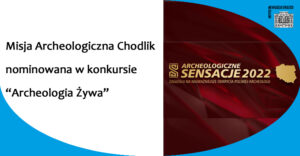
Misja Archeologiczna w Chodliku nominowana w konkursie "Archeologii Żywej"
11 stycznia 2023
Zbyszekcoments closed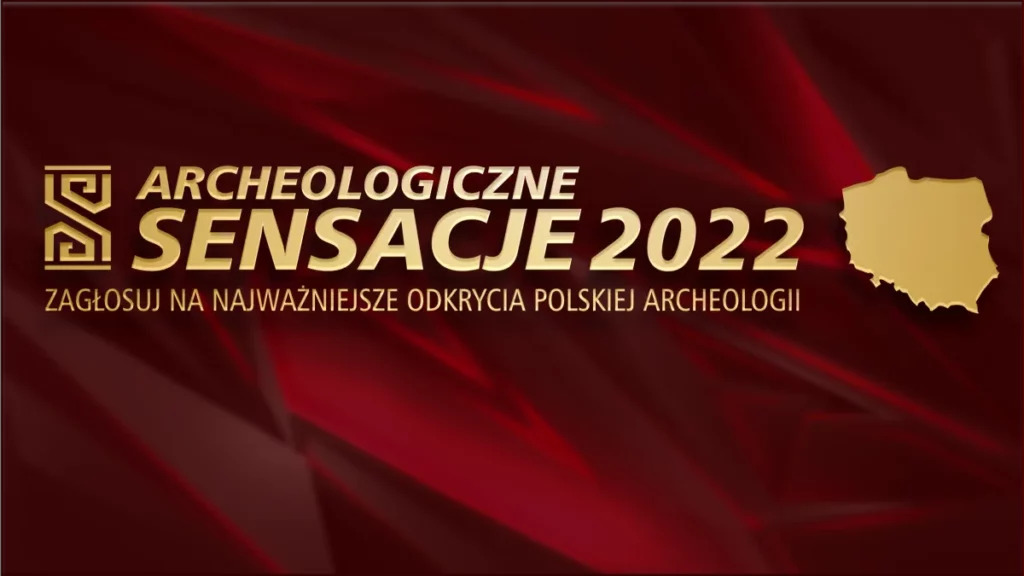
Ekipa dr Łukasza Miechowicza prowadząca badania archeologiczne w Chodliku została nominowana w konkursie organizowanym przez Archeologia Żywa w kategorii popularyzator nauki.
Zachęcamy więc Państwa do głosowania na Archeologia i starożytności Chodlika 🤓
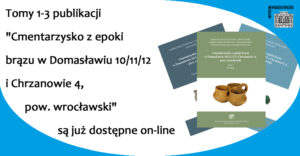
Pierwsze 3 tomy publikacji "Cmentarzysko z epoki brązu w Domasławiu 10/11/12 i Chrzanowie 4, pow. wrocławski" są już dostępne on-line
10 stycznia 2023
Zbyszekcoments closedPierwsze 3 tomy publikacji
"Cmentarzysko z epoki brązu w Domasławiu 10/11/12 i Chrzanowie 4, pow. wrocławski"
są już dostępne on-line na portalu RCIN.org.pl.
Znajda je Państwo pod poniższymi linkami:
Tom 1 - https://rcin.org.pl/publication/273285
Tom 2 - https://rcin.org.pl/publication/273286
Tom 3 - https://rcin.org.pl/publication/273287
Publikację dofinansowano ze środków Ministra Kultury i Dziedzictwa Narodowego pochodzących z Funduszu Promocji Kultury oraz ze środków Instytutu Archeologii i Etnologii Polskiej Akademii Nauk.
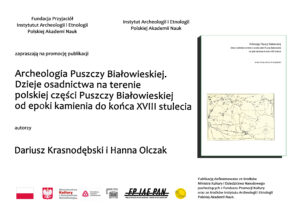
Dariusz Krasnodębski zaprasza na promocję publikacji "Archeologia Puszczy Białowieskiej"
12 grudnia 2022
Zbyszekcoments closed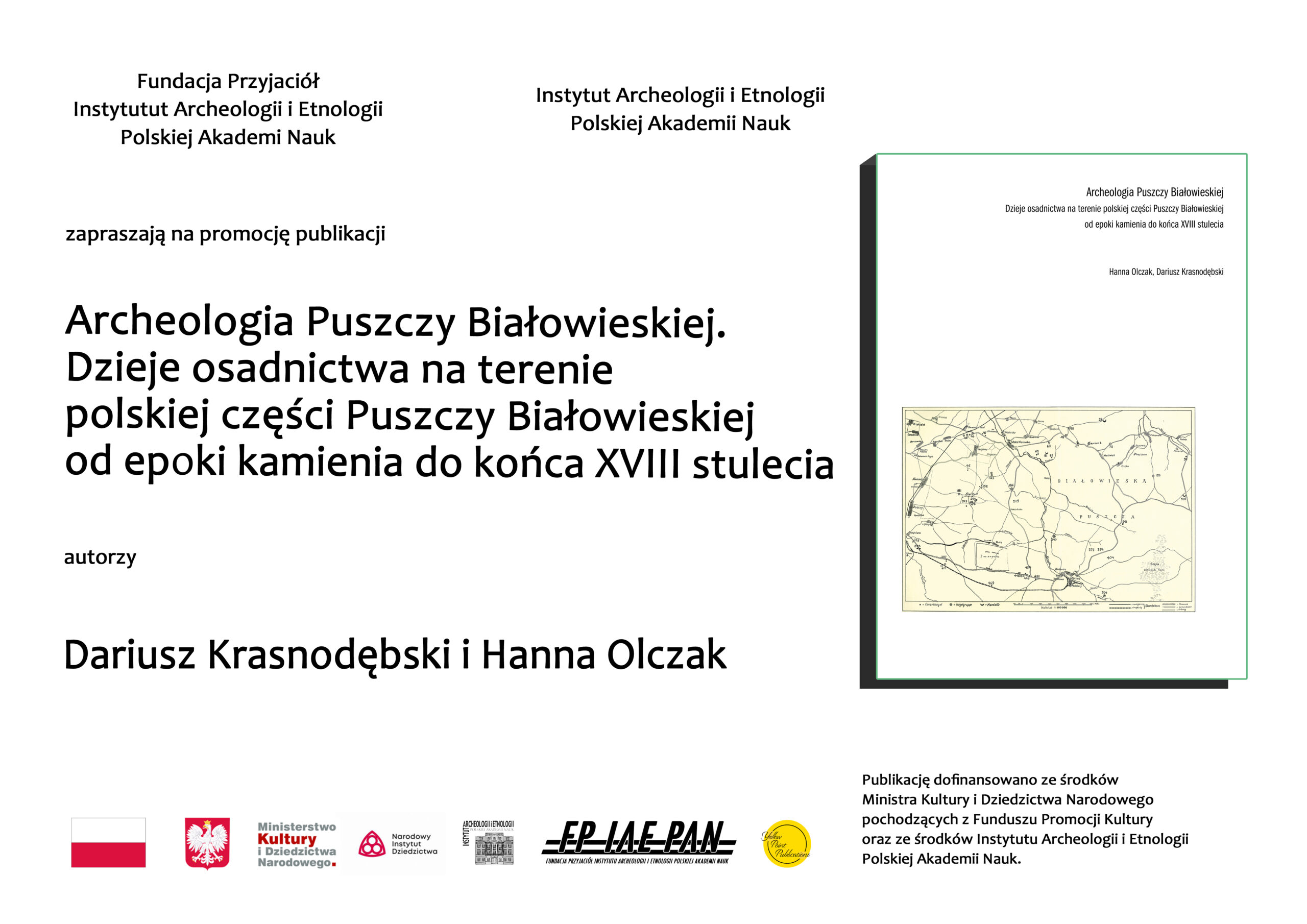

Zaproszenie na promocję publikacji "Cmentarzysko z epoki brązu w Domasławiu 10/11/12 i Chrzanowie 4, pow. wrocławski"
09 grudnia 2022
Zbyszekcoments closed

Zaproszenie na promocję publikacji "Archeologia Puszczy Białowieskiej"
08 grudnia 2022
Zbyszekcoments closed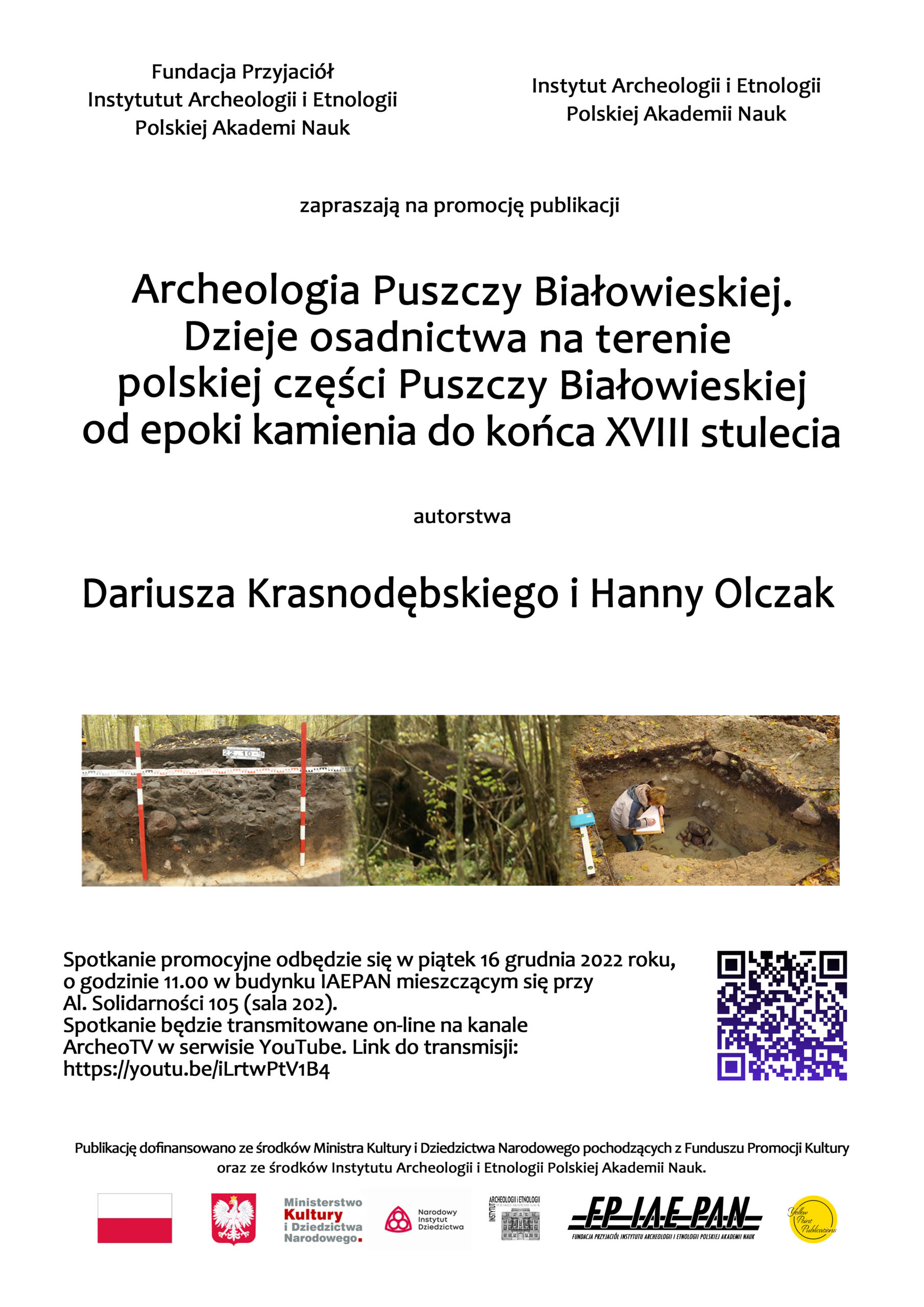
Fundacja Przyjaciół Instytutu Archeologii i Etnologii Polskiej Akademii Nauk
oraz
Instytut Archeologii i Etnologii Polskiej Akademii Nauk
zapraszają na spotkanie promocyjne poświęcone publikacji
"Archeologia Puszczy Białowieskiej.
Dzieje osadnictwa na terenie polskiej części Puszczy Białowieskiej od epoki kamienia do końca XVIII stulecia"
autorstwa Dariusza Krasnodębskiego i Hanny Olczak.
Podczas spotkania Dariusz Krasnodębski wygłosi referat poświęcony badaniom przeszłości Puszczy Białowieskiej.
Spotkanie promocyjne odbędzie się w piątek 16 grudnia 2022 roku, o godzinie 11.00
w budynku IAEPAN mieszczącym się przy Al. Solidarności 105 (sala 202).
Spotkanie będzie transmitowane on-line na kanale ArcheoTV w serwisie YouTube.
Publikację dofinansowano ze środków Ministra Kultury i Dziedzictwa Narodowego pochodzących z Funduszu Promocji Kultury oraz ze środków Instytutu Archeologii i Etnologii Polskiej Akademii Nauk.
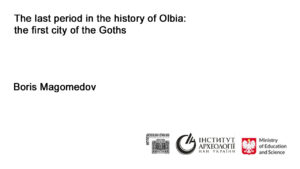
Boris Magomedov lecture from the conference “Olbia in the Hunnic period”
06 grudnia 2022
Zbyszekcoments closed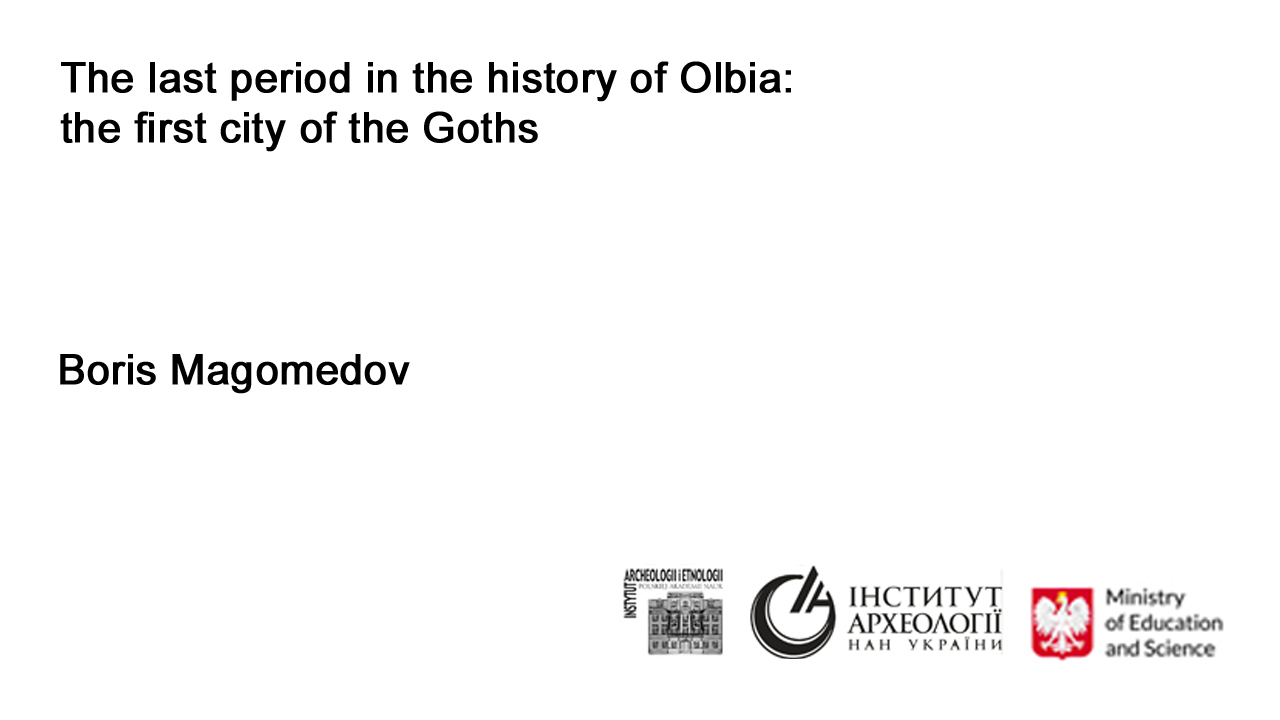
Na kanale Archeo.TV jest już dostępny 14 referat z konferencji "Olbia in Hunnic Period", która odbyła się 5-6 listopada 2021 roku ![]()
Institute of Archaeology and Ethnology of the Polish Academy of Sciences
and
Institute of Archaeology of the National Academy of Sciences of Ukraine
presents a lecture from a scientific conference:
Olbia in Hunnic Period
organized at November 5–6, 2022
Author: Boris Magomedov
Title: The last period in the history of Olbia: the first city of the Goths
Abstract: Artifacts of Chernyakhov culture were found in Olbia already in the mid-20th century, enabling conclusions concerning the presence of a Chernyakhov population in the city in the late Roman period (Magomedov 1985; 2001). Significantly more finds have come from recent excavations, including the work of the Ukrainian–Polish expedition in 2016–2021. An analysis of Chernyakhov finds (ceramics, fibulae, combs), as well as dating late antique finds, makes it possible to reconstruct the last period in the city’s history. The Greco-Roman inhabitants left the city around the middle of the 3rd century. A small barbarian population settled Olbia and the neighboring rural settlements at the end of the century. The “Chernyakhovites” displayed an interest in the port of Olbia as a place of trade, but not in the destroyed city, probably until the 370s. The last, brighter phase in the life of the city started at the beginning of the Hunnic period, after 375, and ended together with the decline of Chernyakhov Culture in the first third of the 5th century. After a 100-year hiatus, Olbia was reborn as a small fortified town, trade and crafts center, inhabited by the Goth barbarians. An active program of building works was instigated in the Roman citadel and in the Lower City. The revival of the Citadel accompanied a restoration of the old defensive system on the borders of the former Olbia state (the Kozyrka, Petukhovka, Stanislav and other forts). This is most likely an indication of the existence of one of the early state entities of the Hunnic period—possibly the kingdom of Gesimund, an ally of the Huns—that grew upon the ruins of the Gothic “state of Hermanarich”.
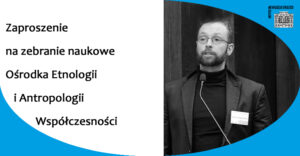
Zaproszenie na zebranie naukowe Ośrodka Etnologii i Antropologii Współczesności, Instytut Archeologii i Etnologii PAN
02 grudnia 2022
Zbyszekcoments closed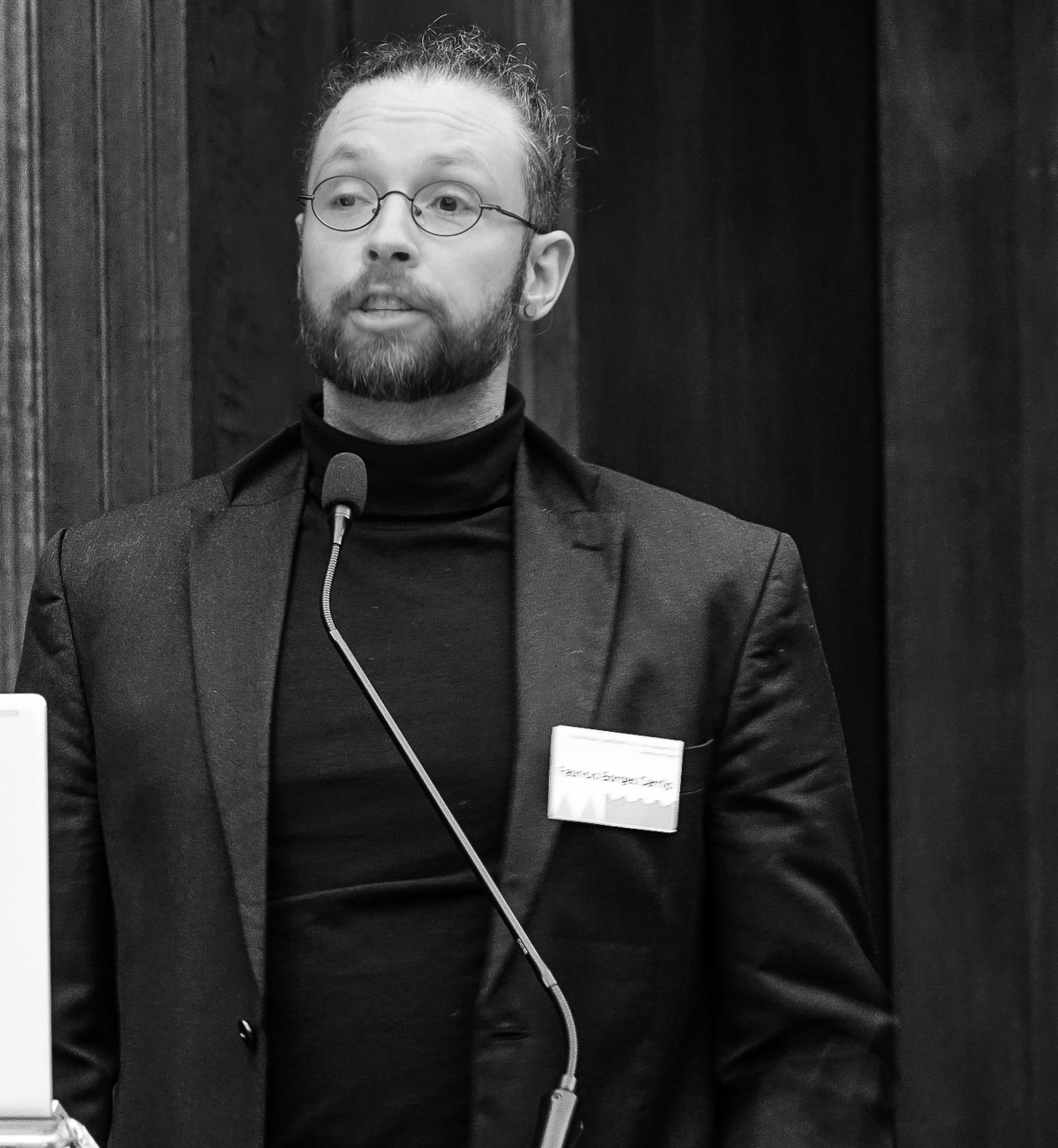
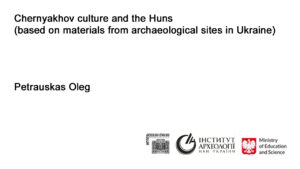
Petrauskas Oleg lecture from the conference “Olbia in the Hunnic period”
29 listopada 2022
Zbyszekcoments closed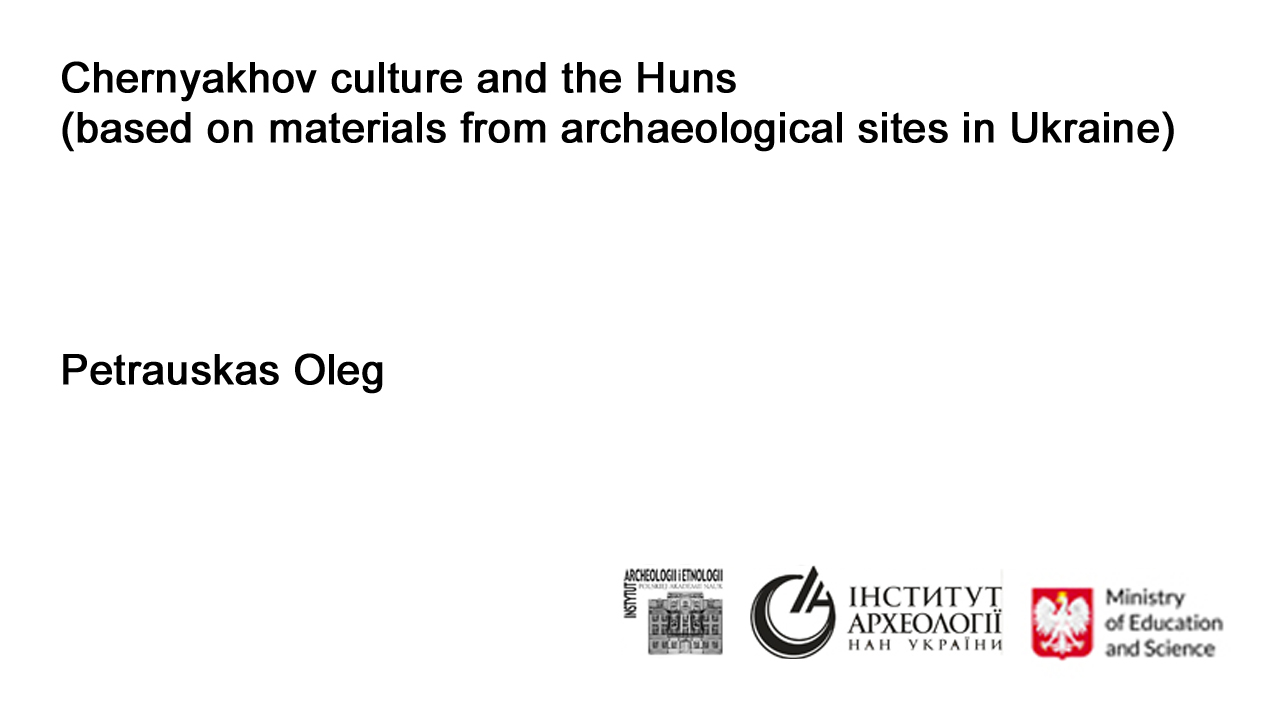
Na kanale Archeo.TV jest już dostępny 13 referat z konferencji "Olbia in Hunnic Period", która odbyła się 5-6 listopada 2021 roku ![]()
Institute of Archaeology and Ethnology of the Polish Academy of Sciences
and
Institute of Archaeology of the National Academy of Sciences of Ukraine
presents a lecture from a scientific conference:
Olbia in Hunnic Period
organized at November 5–6, 2022
Author: Petrauskas Oleg
Title: Chernyakhov culture and the Huns (based on materials from archaeological sites in Ukraine)
Abstract:
The issue of the relations between the Chernyakhiv culture and the Huns is considered based on archaeological data and information from the written sources, principally the writings of Ammianus Marcellinus and Jordanes. The Huns appeared in the Black Sea region at the end of the reign Rex of the Goths Germanarich (between 369–375\376). It corresponds to the end of phase C3 in the relative chronology of eastern Europe antiquities. According to Jordanes, the Ostrogoths stayed in their places of residence after being subjugated by the Huns. This appears to be corroborated by the assemblages of finds representing the Chernyakhiv culture which correspond largely to phases D1 and D2 (about 370–450) of the European relative chronology.
The disappearance of Chernyakhiv culture can be explained only taking into account the polyethnic nature of this formation. For instance, according to the written sources, it took the better part of half a century for the Ostrogoths, one of the components of the Chernyakhiv culture, to migrate to the Roman provinces. The fate of other components of the culture can be reconstructed from archaeological sources. Some of Chernyakhiv culture artifacts (glass cups, buckles, combs, antique imports) can be dated to the end of the 4th and the first half of the 5th centuries. The ethnocultural specificity of late Chernyakhiv culture is mostly associated with the Scythian-Sarmatian and early Slavic components. The disappearance of this culture appears to be the result of a complex set of socio-economic factors.
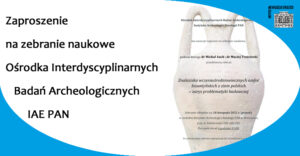
Zapraszamy na zebranie naukowe Ośrodka Interdyscyplinarnych Badań Archeologicznych IAE PAN
10 listopada 2022
Zbyszekcoments closed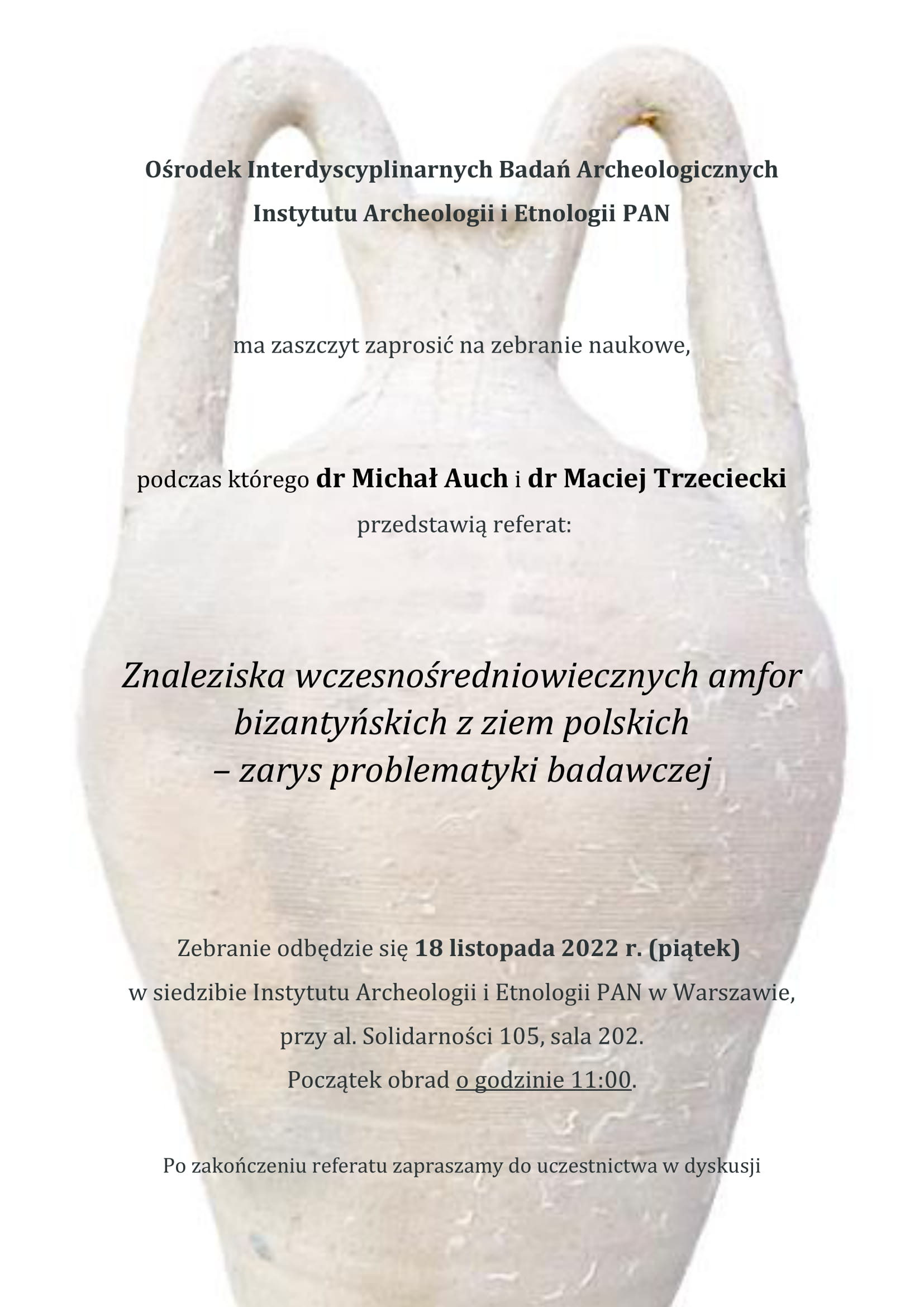

Serhii Didenko lecture from the conference “Olbia in the Hunnic period”
03 listopada 2022
Zbyszekcoments closed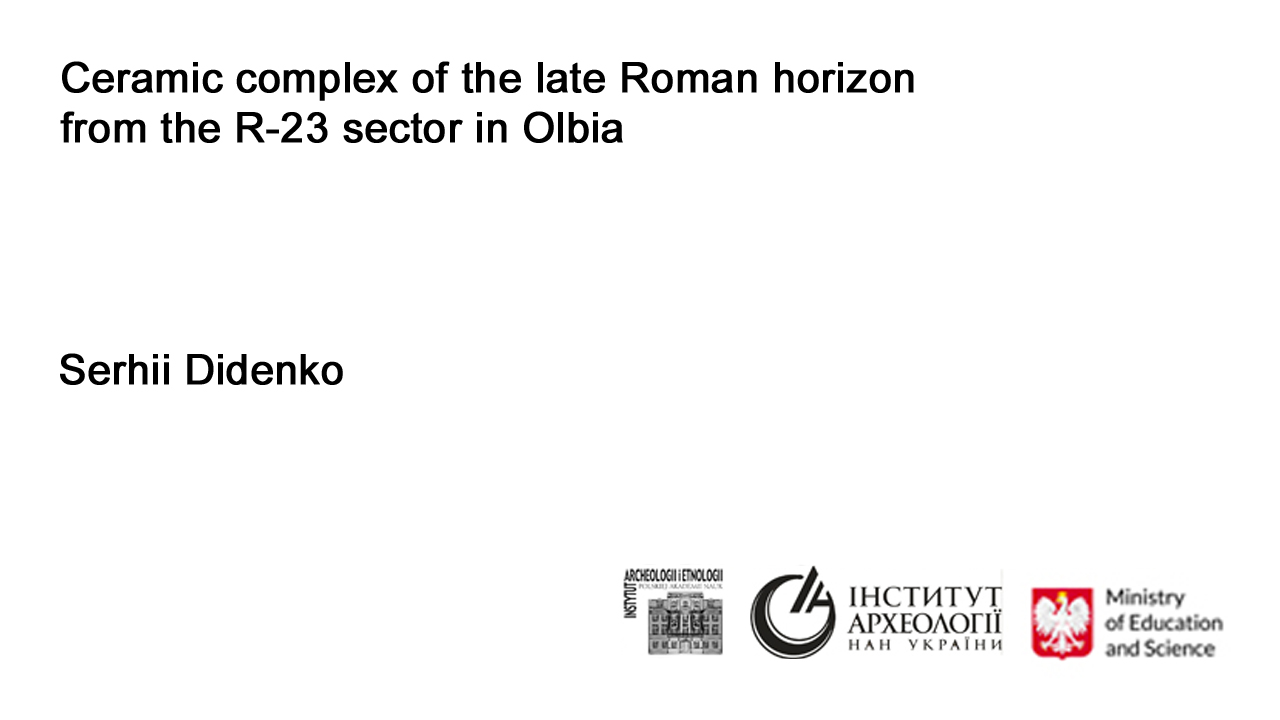
Na kanale Archeo.TV jest już dostępny 9 referat z konferencji "Olbia in Hunnic Period", która odbyła się 5-6 listopada 2021 roku ![]()
Institute of Archaeology and Ethnology of the Polish Academy of Sciences
and
Institute of Archaeology of the National Academy of Sciences of Ukraine
presents a lecture from a scientific conference:
Olbia in Hunnic Period
organized at November 5–6, 2022
Author: Serhii Didenko
Title: Ceramic complex of the late Roman horizon from the R-23 sector in Olbia
Abstract:
The excavations in 2016–2018, 2021 in the southeastern part of the Olbia citadel (sector R-23), carried out within the Ukrainian–Polish project of the Institute of Archeology of the National Academy of Sciences of Ukraine, the National Museum of Warsaw, and the Institute of Archeology and Ethnology of the Polish Academy of Sciences, revealed interesting contexts related to the latest antique layer of the site.
The Late Antique ceramic complex of this sector includes fragments of amphorae, red-slipped wares, wheel-thrown gray-clay pottery and handmade pottery dating from the 4th century AD and possibly later.
Four types of amphora containers were distinguished: 1) amphorae from Heraclea, types F and E according to D. Shelov’s typology; 2) Sinope amphorae type 100 according to I. Zeest; 3) Northern Pontic amphorae type Kharax, burial 33 according to A. Abramov; 4) Eastern Mediterranean amphorae of the LRA 1 Benghazi type according to J. Riley. There were also some amphorae from unidentified centers.
The red-slipped wares included Pontic Red Slip Ware (Domżalski forms 1, 2) and Pontic Red Slip Ware (Hayes forms 50, 67).
Wheel-thrown gray-clay pottery is subdivided into three classes: dining (bowls and vases), cooking (pots), and storage (large storage vessels). This category of the material has the closest parallels in the Chernyakhiv/Sântana de Mureș Culture, which was distributed on the territory of the Ukrainian Forest-steppe, the North-Western Black Sea region, Moldova, and Romania in the late Roman time.
Handmade pottery is represented by fragments of vessels typical for the Chernyakhiv culture. The fragment of the bowl made in the Germanic tradition deserves special attention.
A comprehensive analysis of the ceramic complex from the R-23 sector demonstrates close affinities with finds from Kiselov group sites of the Chernyakhiv culture in the territory of the North-Western Black Sea region.
Referat znajdziecie na YouTube, pod tym linkiem:





